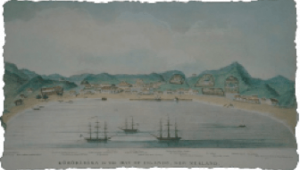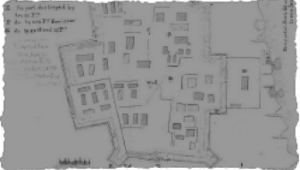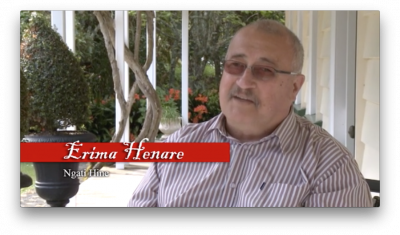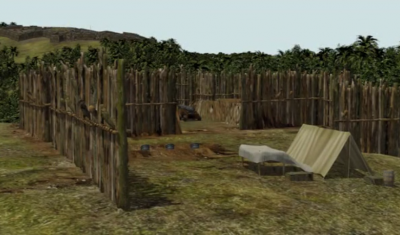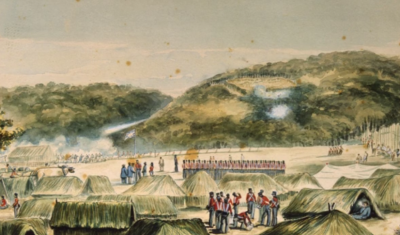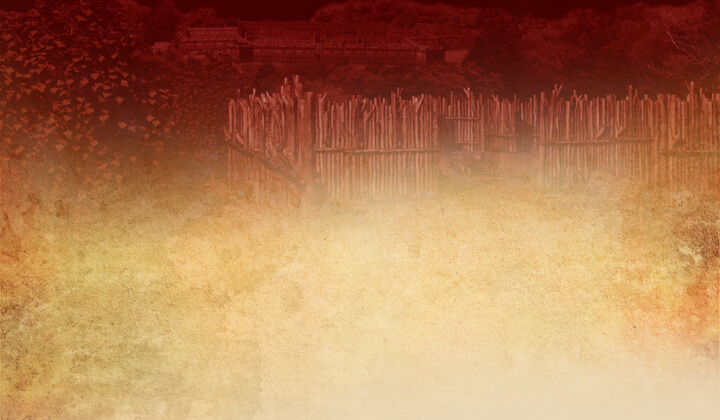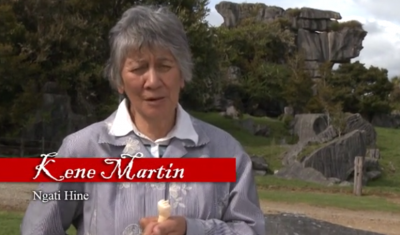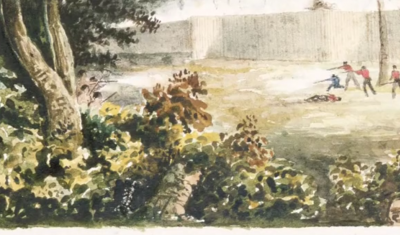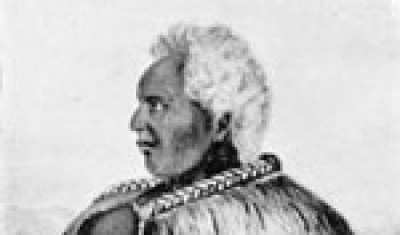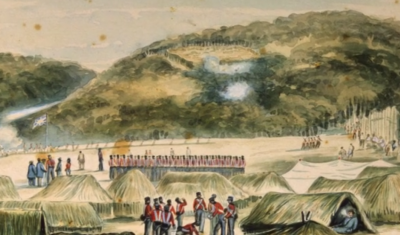
A heavy bombardment
(31 December 1845 - 10 January 1846)



Kawiti’s men inside the pā numbered between 300 and 400, and logistical support was provided by men and women living in the wider area. The people inside the pā were fairly safe within the underground rua (bunkers), but the constant din and subsequent lack of rest took its toll. There were casualties during the bombardment – on 31 December, a woman was “decapitated by being struck by a cannonball”.1
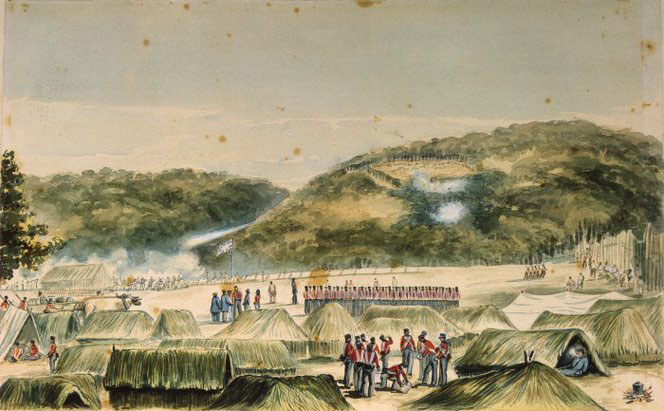
The bombardment in progress. The Main British Camp is in the foreground. Ruapekapeka Pā is on the hill in the background.
By Williams, J.; Bridge, C. From the Alexander Turnbull Library ref. A-079-030
The warriors were not content to wait behind the palisades while the British were setting up their firing positions. On January 2, they conducted a sortie against the main battery and stockade, which was fought off by Nene’s warriors. The soldiers did not participate in the skirmish, because they struggled to tell their allies apart from their enemies.
After more than a week of continuous bombardment, Kawiti began to plan a withdrawal from the pā. The British had a seemingly endless supply of ammunition, and he knew the defences would not stand up indefinitely. From 8 January, the soldiers could see parties moving back and forth, carrying food and other equipment out of the pā. At this point, Hōne Heke and his men finally arrived at Ruapekapkea, having promised Kawiti support for when the soldiers attacked.
On 10 January when all the guns were in position, Despard changed tactics. A massive co-ordinated bombardment was directed at the north-eastern aspect of the pā. It was too much for even the strongest timber palisaiding to bear and by afternoon, the defences were breached. As soon as the defences were breached Colonel Despard ordered an armed charge on the pā, and a storming party was formed. However, he was persuaded to postpone the assault by Nene and other allied chiefs. The chiefs told him that “if he waited until tomorrow he would get the pā”.2
